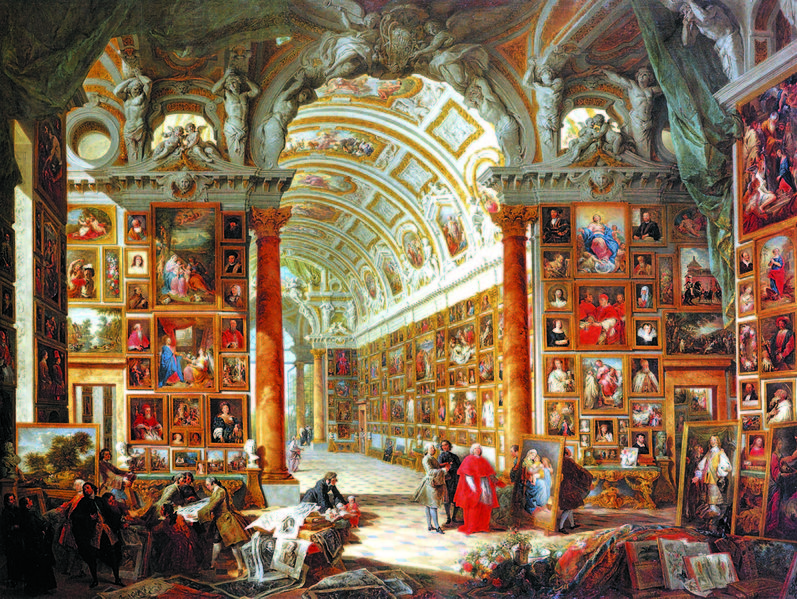Paolo stays afloat in the ocean of scholarship
I’m back from my first in-person conference in a long time. As always, it was overwhelming — not just because of the exhaustion of travel and nonstop socializing, but also because of the sheer amount of research being presented. Even small, technical niches can seem like enormous oceans of scholarship after a day full of talks on the same subject, especially when each talk seeks to stand out by arguing passionately for its own significance. It’s easy to feel lost or even to drown, by which I mean to become convinced that your own work is just a meaningless drop in that ocean.
On my last evening at the conference I walked through a poster session and, seeing everyone vie for attention, I thought suddenly of paintings of Renaissance art galleries packed with paintings, such as the one below by Paolo (1740). Suddenly, I felt a lot better. I was reminded that even the greatest artists we revere today had their works exhibited in such galleries, vying for attention, drowning in the floor-to-ceiling noise and chaos. It is true that some paintings received the recognition they craved while hanging on those walls, but many other paintings took decades or even centuries to bubble up into their present stature. At the same time, much of the art that screamed for attention on the gallery wall three centuries ago is now forgotten, or even dismissed by some as “kitsch.”
These thoughts are comforting because they give me permission to distance my research from its reception. Let time judge. Until then I will produce work that shines in my eyes, and trust and hope and wish that someone else may one day see like me.
